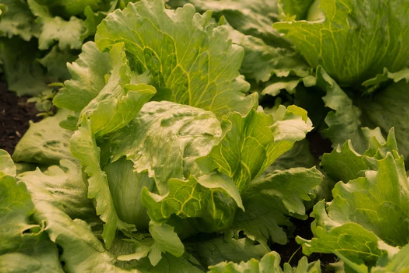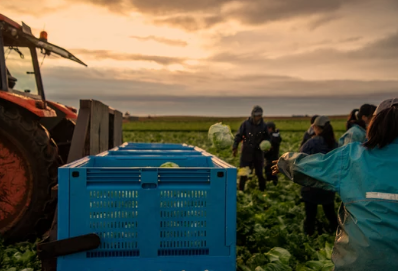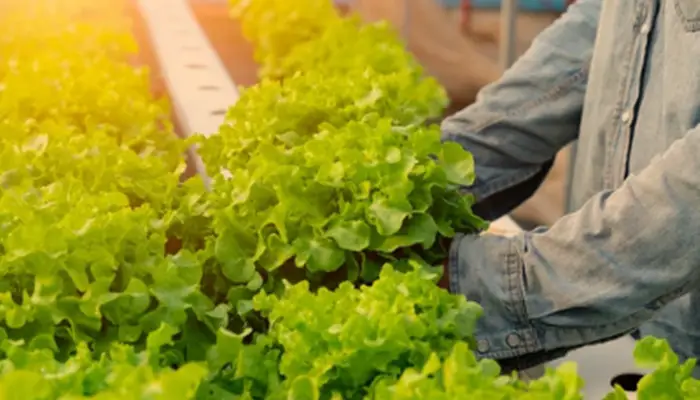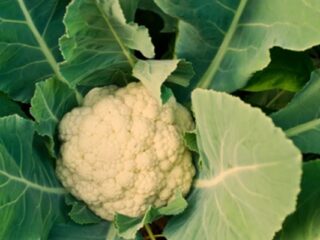Iceberg lettuce, with its crispy texture and mild flavor, has long been a staple in salads and other culinary creations.
Whether you’re a seasoned gardener or a home grower, knowing when to harvest iceberg lettuce is crucial to enjoy its optimal taste, texture, and nutritional benefits.
In this comprehensive guide, we will take you through the step-by-step process of determining the ideal time to harvest your iceberg lettuce.
The Growth Cycle of Iceberg Lettuce

To comprehend the perfect harvest time, it’s important to grasp the growth cycle of iceberg lettuce.
It begins with seed germination, progresses to the seedling stage, and then forms a rosette of leaves.
As the plant continues to grow, it eventually develops a head of tightly packed leaves.
The final stage is maturity, where the lettuce reaches its peak flavor and texture. Each stage plays a crucial role in determining the right time for harvesting.
Observe the External Signs of Readiness

External signs can provide valuable clues about the readiness of iceberg lettuce for harvest.
When the lettuce nears maturity, you will notice a fully formed head that is firm, dense, and tightly packed.
The color of the lettuce leaves changes as well, developing a vibrant green hue.
Also, monitor the outer leaves for crispness and a slightly curled or folded appearance. It’s worth mentioning that the average size of mature iceberg lettuce heads is around 6 to 8 inches in diameter.
Gauge Internal Readiness
While external signs are helpful, evaluating the internal characteristics of iceberg lettuce is equally important. To determine if the lettuce is ready for harvest, employ the following techniques:
Firstly, gently squeeze the head of lettuce. A mature head should feel moderately firm but not excessively hard. If it feels too soft or mushy, it may not be ready for harvest.
Secondly, peel back a leaf or two to inspect the core. The core should be tightly compacted, without any signs of browning or discoloration. Browning or discoloration could indicate overmaturity or potential rot.
Thirdly, examine the leaves for any signs of bitterness or pungency. Ideally, the flavor should be mild and slightly sweet. If the taste is overly bitter or pungent, it might be an indication of overmaturity.
Consider Environmental Factors
Environmental conditions play a significant role in the growth and quality of iceberg lettuce.
Temperature and daylight requirements are crucial for optimum growth. Lettuce thrives in cool temperatures, ideally between 45°F and 75°F (7°C to 24°C).
Extreme heat can cause lettuce to bolt, resulting in a bitter taste and poor texture. Prolonged exposure to cold temperatures, on the other hand, can cause damage and reduce quality.
Furthermore, excessive moisture can lead to disease and affect the texture of the lettuce.
It is important to provide proper drainage and avoid overwatering the plants. Regularly inspect the lettuce for signs of pests or diseases and take appropriate measures to address any issues.
Harvesting Techniques

Harvest Iceberg Lettuce
Once you’ve determined that your iceberg lettuce is ready for harvest, it’s time to gather your tools and follow the correct harvesting techniques. Here’s a step-by-step guide:
- Prepare the necessary tools, such as a sharp knife or garden shears. Ensure they are clean and sterilized to avoid introducing pathogens.
- Select the heads you wish to harvest, and gently remove any outer leaves that appear damaged or wilted.
- Position the knife just above the soil level and cut the stem cleanly. Avoid cutting too close to the head to prevent damage.
- Alternatively, you can choose to harvest the entire plant by cutting it off at the base.
- Rinse the heads gently under cool water to remove any dirt or debris. Pat them dry with a paper towel to remove excess moisture.
- Store the lettuce in a perforated plastic bag or wrap it loosely in a damp paper towel to maintain humidity while allowing for airflow.
- Place the lettuce in the refrigerator’s crisper drawer, ideally at a temperature of around 32°F to 40°F (0°C to 4°C).
- Avoid storing lettuce alongside ethylene-producing fruits and vegetables, as it can accelerate its deterioration.
- It’s best to use the lettuce within a week for maximum freshness and flavor. As time passes, the quality may decline.
Harvesting Succession and Regrowth

To maximize your lettuce harvest throughout the growing season, consider implementing harvesting succession and regrowth techniques.
Harvesting succession involves planting lettuce seeds or seedlings at staggered intervals, ensuring a continuous supply of fresh lettuce. This way, you can harvest the heads at different stages of maturity.
Regrowth, also known as cut-and-come-again, involves harvesting outer leaves while leaving the central core intact. The lettuce plant will continue to produce new leaves from the center, allowing for multiple harvests from a single plant.
Conclusion
Harvesting iceberg lettuce at the right time is crucial for ensuring its optimal flavor, texture, and nutritional value.
When you see external signs, gauge internal readiness, consider environmental factors, and follow proper harvesting techniques, you can enjoy the bountiful rewards of homegrown lettuce.
Remember to provide post-harvest care to prolong its freshness.
So, whether you’re a dedicated gardener or a novice home grower, use this comprehensive guide to determine the perfect time to harvest your iceberg lettuce and enhance your culinary delights with its crisp and refreshing taste.




